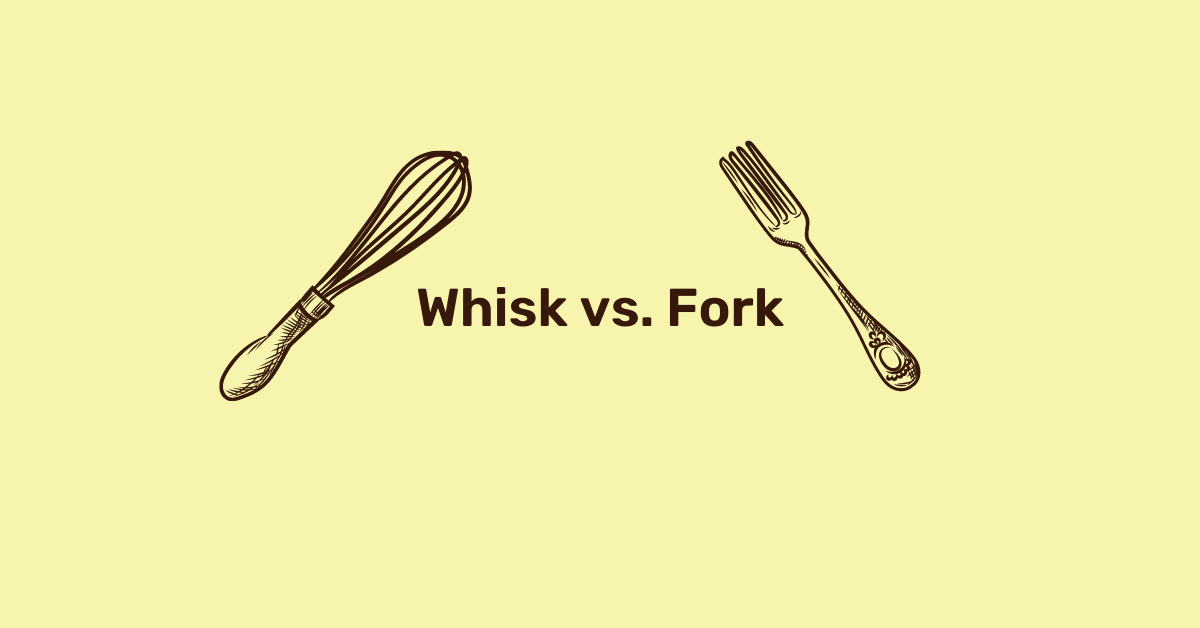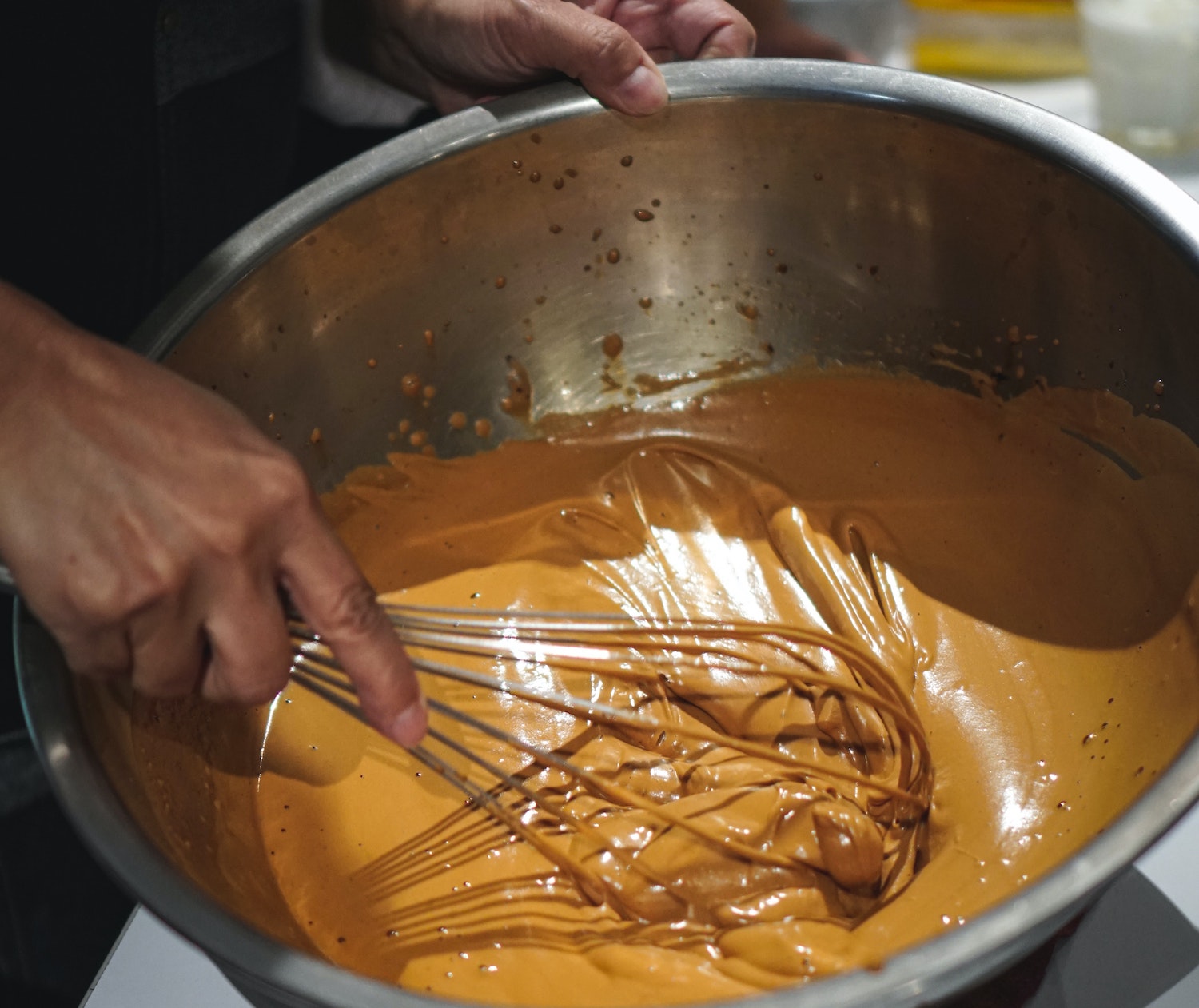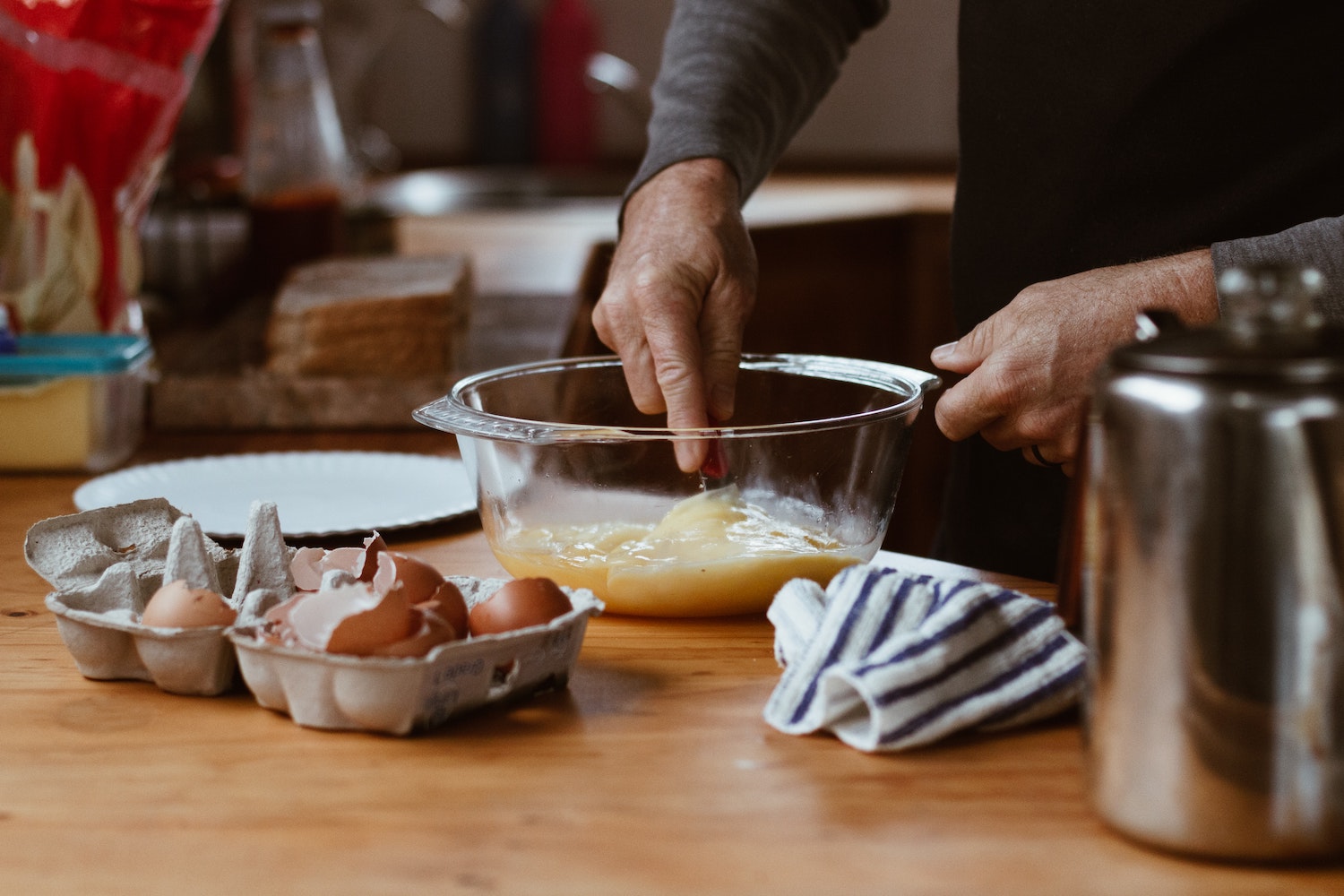Whisk vs Fork – When To Use Which in the Kitchen

Some of the most commonly used tools in day-to-day cooking are whisks and forks. If you cook often, you must know how helpful yet confusing choosing between the two tools can be in certain cases. When it comes to mixing ingredients, a majority of people tend to wonder whether to pick up a fork or opt for a whisk.
But then, what is the use of a whisk? Can using a whisk give better consistency or texture to your food, like eggs or pancakes? Are you curious to know how whisks and forks work and which one you should use for specific use cases? If yes, then hop on down to our guide for the ultimate whisk vs. fork smack down and find all your answers.
Whisk vs Fork – Which Is Better?
To understand which kitchen utensil is better to use and when have a look at our quick guide:
| Aspect | Whisk | Fork |
| Function | It is a mixing tool that helps combine ingredients thoroughly while incorporating air for a frothy texture. | It is a tool used in dining for eating. But forks can also be used to mix and blend ingredients in a bowl when in a pinch for for simple mixes. |
| Ease of use | Whisk is generally easier to use when it comes to mixing or beating. They are designed specifically to do solely this.
Especially with electric whisks, you can enjoy an effortless experience mixing your favorite dishes. |
A fork is not as convenient to use when compared to a whisk. This is because it is only a substitute and is not solely meant for mixing.
So it takes quite some effort and time to achieve similar results as that of a whisk. |
| Results | You will get the best results and accurate consistency with whisks. They help enhance the texture of mixtures and batters. | The results with a fork will not be as satisfactory as with a whisk. Forks are appropriate for simple tasks like whisking eggs. |
| Use | You can use a whisk to mix or blend ingredients, batters, cream, salad dressings, eggs, etc.
They are a better choice for complex tasks and for higher quantities. |
Forks are appropriate for simpler recipes like eggs or dressings. They are not suitable for thick batters and large quantities of food. |
Whisks are explicitly built to blend or mix while incorporating air to make a mixture fluffy. Given this singular focus, you will get more accurate results when it comes to baking or creating unique dishes with a whisk. Using a whisk will also require less effort and time than a fork, and don’t we all love that in our lives.
However, not many people prefer to buy a whisk separately. This is because, in everyday cooking, you can replace a whisk with a few items, including forks. You can easily whisk with a fork as you will see how later in our article. If you’re not super “into” baking or cooking all that often can quickly settle for a fork to whisk as it will give you satisfactory results.
For example, if you need to whisk an egg, a fork can and will do an excellent job for you, and you don’t have to buy a whisk separately.
However, if you’re trying to be a specialist in the kitchen and are particular about the consistency and texture of your recipe, it is almost a requirement to go for a whisk. Using a fork for such a type of cooking might become really hard to execute.
What Exactly Is a Whisk?
A whisk is a mixing tool that comes in handy while cooking. Whisks are often made up of a series of tiny metal wires that are looped at both ends and fastened to a handle. Metal or plastic are used to make whisks.

You can use it to combine smooth ingredients or add air into a recipe to get a frothy texture. Whisking, or even whipping, is a common term for this procedure.
A whisk may assist you with a variety of tasks when cooking. You may use it to stir, beat, or whisk your ingredients together. A whisk is run by good ole elbow grease (manual labor) to mix, beat, or whip ingredients in a bowl.
What Are The Various Types Of Whisks?
Whisks come in a variety of shapes and sizes, each with its unique set of capabilities. The balloon whisk is the most common type of whisk though, odds are you have at least one in your drawer. Here are a few of the more popular whisks for different use cases in the kitchen:
Balloon Whisk
The balloon whisk has circular wires that expand into the shape of kind of a light bulb. Because of its form, a balloon whisk is ideal for whisking and blending things in regular mixing basins. Look for wires that can readily cut through thicker mixtures like pancakes.
READ MORE: Learn how to make pancake batter thicker and how to whisk perfectly.
French Whisk
The French whisk is how it sounds – a modified and upgraded version of the traditional whisk. Its design is very similar to a balloon whisk, although it is more tapered.
It’s better for liquids or salad dressings instead of denser batters due to the smaller shape and tighter wire spacing.
Flat Whisk
A flat whisk is also known as a roux whisk. It features a structure that allows it to move over the edges of a pan with ease. When cooking a sauce or gravy containing dry components like flour, this whisk comes in very handy. It will assist you in thoroughly mixing the ingredients.
Ball Whisk
The ball whisk has little metal balls at the tip of every prong that split apart and mix objects like eggs into a homogenous liquid rather than a wire cage.
Dough Whisk
Of all the whisks, the dough whisk is possibly the most specialized. This is because it is comprised of a single thick, looping length of wire. As the name implies, its main focus is to be used to merge dense, shaggy doughs.
Coil Whisk
A galaxy whisk or a spring whisk are also common names for the coil whisk. It works similarly to a flat whisk in breaking down and mixing lumpy dry ingredients while making gravy. However, because of its form, it works best for incorporating ingredients in a cup.
How To Use A Fork For Whisking?
People often question if you can you use a fork instead of a whisk? Well, you surely can do that! When there are too many components, however, one fork will not be sufficient and requires the use of a second fork.

It also may mean using a bigger mixing bowl to guarantee that you have adequate area to mix your items without causing a mess. The forks you use must be similar in length and size to achieve the best results.
Forks can be an excellent substitute for whisks as they give similar results while mixing and are easy to handle. Several recipes that require whisking can be whisked with just a fork in a pinch.
There may be occasions when using a whisk is essential, but you don’t have one on hand. Tapping two forks together will provide the same result in this situation. Make sure the tines and handles of the forks are the exact sizes.
You should put one on top of the other, overlapping the tines. This will assist you in achieving comparable results. Usually, to ensure air is provided while mixing, two forks are strapped together, one on top of another, with a folded paper towel in between.
The main drawback to this option is the limited number of bowls that you will be able to use. Because forks scratch easily, the bowl selection is critical.
Final Verdict
So are you still questioning, is a fork as good as a whisk? The answer to whether to use whisks or forks entirely depends on how lazy you are feeling and what you have in the kitchen. Choose accordingly, and don’t stress to hard.
In case you’re looking for a smooth consistency and texture, go with a whisk. But if you don’t want to spend more money on additional kitchen equipment like a whisk, you can simply pick a fork to mix the ingredients well.
Most people are unaware that forks can perform similar functions to a whisk. Now that you know all about whisk vs. fork and how exactly these two tools function, you can go on to bake and cook delicious dishes!

Ian Hoyt is a co-founder of Morsel – a family recipe cookbook software. When he isn’t working on building the best recipe app for your family Ian can be found hiking in the mountains of North Carolina, flying airplanes, or of course in the kitchen perfecting his beloved scone recipe.
